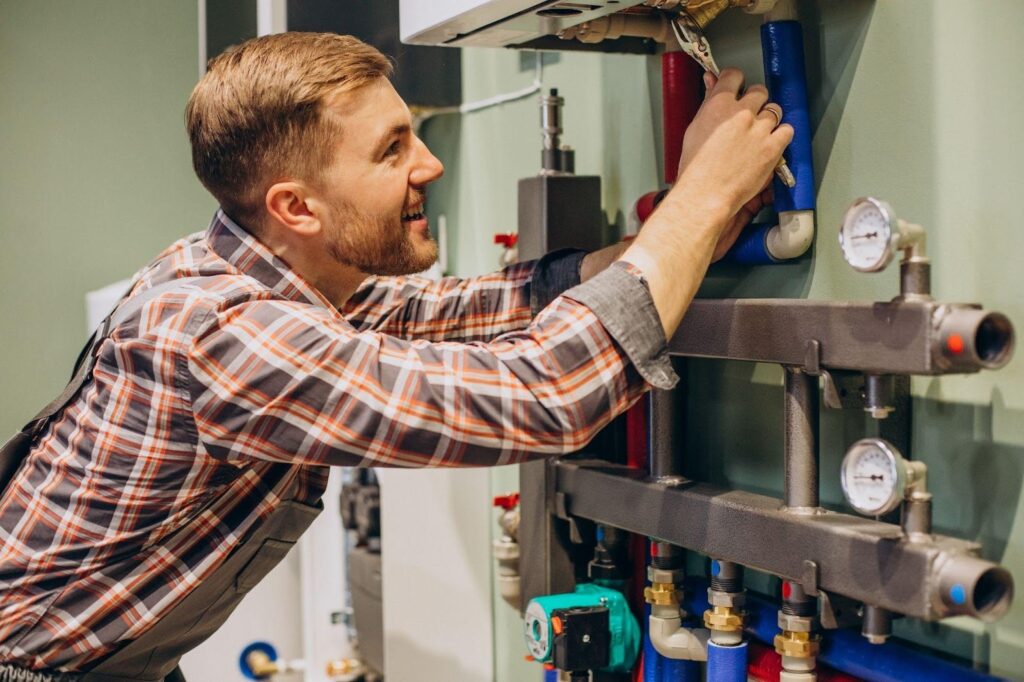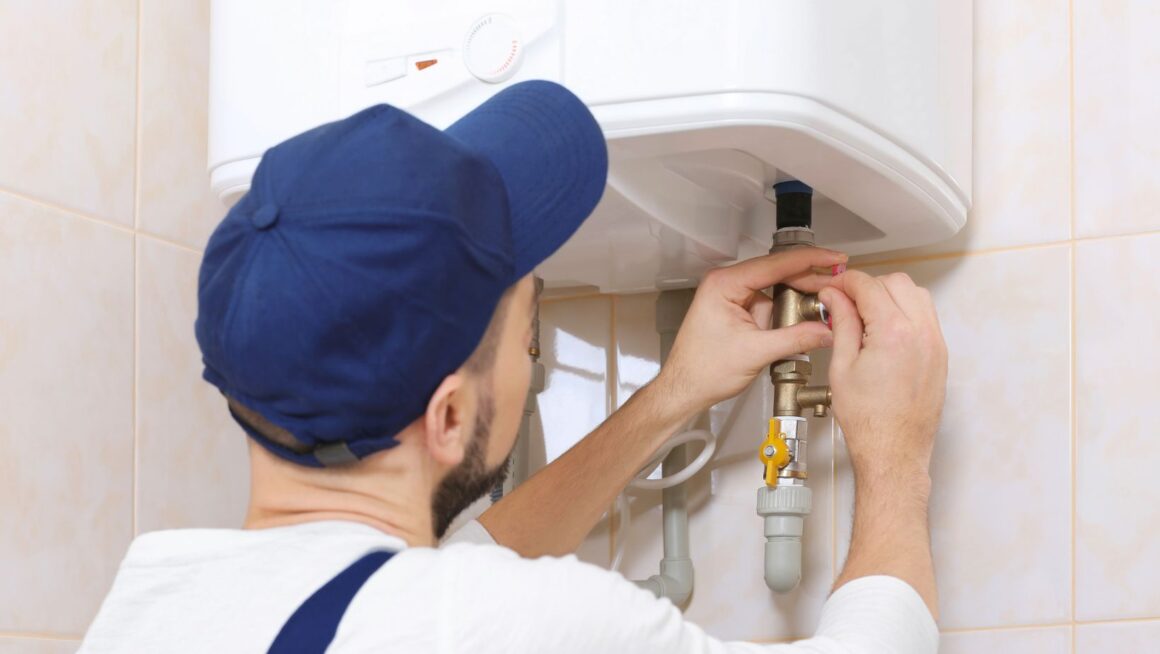
Imagine hopping into the shower, all excited for that steamy blast of hot water, only to get hit with one measly drop that sends shivers down your spine. Or staring down that stubborn white ring around your faucet, scrubbing away like crazy, but it just won’t budge, no matter what. Look, these aren’t just random annoyances; they’re classic red flags for hard water, that mineral-loaded stuff quietly corroding your water heater from the inside out.
You never know when hard water problems will show up. It has a lot of calcium and magnesium in it, which causes water quality problems all over your home. Heat causes these minerals to form deposits that obstruct systems and consume more energy, according to the U.S. Geological Survey. If your bills are rising or your water is lukewarm, local professionals can help. For those in the Bay Area, water heater repair in Santa Clara from pros like Fuse Service can restore reliable heat fast and affordably.
We’ll unpack hard water’s tricks, its assault on your heater, and straightforward defenses. Armed with this, you’ll spot trouble early and keep your setup humming sans the shock of repair tabs.
The Hidden Culprit in Your Tap
Why doesn’t your soap foam up and put a greasy film over everything? It is hard water and it can be found almost everywhere. Water grabs even more minerals as it goes deeper into the earth from the rocks and the soil it meets. The USGS says that soft water is when calcium carbonate levels are less than 60 mg/L. The classification of hard water is based on the following: moderately hard water is from 61 to 120 mg/L, hard water is from 121 to 180 mg/L and extremely hard water is over 180 mg/L.
You see this a lot in places like the U.S., or pretty much anywhere with those old pipelines or limestone bedrock. The water starts out nice and clean, but as it moves along through the system, it grabs onto all those minerals, which can really mess with your plumbing. And in hot water systems, those minerals turn into scale that clogs things up, slows the flow, and just makes everything way less efficient. It’s a steady burn, not a deluge, so people don’t notice it until performance drops.
Scale Build-Up: The Silent Saboteur
Scale is hard water’s nasty sidekick, crystallizing inside your heater like unwanted barnacles. These calcium deposits coat heating elements, blocking heat transfer and gumming up pipes. Pacific Northwest National Laboratory research shows scale insulates the tank, forcing the unit to burn more fuel just to hit set temps. Experts from Virginia Tech claim that even a small buildup can reduce efficiency by 20–30%.
Heat expedites the procedure: Minerals quickly solidify at 140°F, causing corrosion that eats away at tanks and anode rods. Montana State University warns that this cuts heater life short, from a potential 15 years to just 8-12. The damage hides until leaks or failures strike, turning routine use into crisis mode. Hard water problems like scale don’t announce themselves; they just rack up the wear.
Everyday Consequences at Home
Hard water’s chaos spills into daily life, hitting showers, sinks, and beyond. Dry, itchy skin and limp hair? Minerals strip oils, leaving residue that clings to tiles as soap scum. Dishes emerge from the washer cloudy; laundry stiffens and fades prematurely.
Your water heater amplifies it all. Insulated by scale, it delivers sluggish hot water, endless waits for that morning rinse and spikes energy draws. Virginia Tech pegs the efficiency hit at 20-30%, bloating bills by hundreds yearly. For families, it’s more than annoyance: Uneven heat disrupts baby bottles or soothes sore muscles. Appliances groan too, clogged makers, strained washers, eroding that cozy home vibe. These water quality issues snowball, morphing gripes into gridlock.
Detecting Hard Water Before It’s Too Late
Catching hard water early is straightforward, no lab coat required. Try the soap test: Mix equal parts water and pure liquid soap in a bottle, shake hard. Scant bubbles and cloudiness scream hard water; rich foam means soft water.

For accuracy, snag test strips from a store they dip in, change color, and reveal levels in grains per gallon or ppm. Look for clues: Chalky faucet rings, rusty stains, gritty post-wash feel, or flat coffee. Culligan flags spotty glassware and sluggish ice makers, too. Your utility’s water report often lists hardness by area, free intel to guide your next move.
Protecting Your Water Heater
Fight back with routine water heater maintenance. Flush yearly: Shut off power, hose the drain, and run till clear, tossing in vinegar to dissolve early scale. Dial the thermostat to 120°F, which curbs scaling without legionella risks, per energy guidelines.
A water softener is your shield, swapping minerals for sodium to halt buildup. It extends heater life years and trims energy use, as plumbing pros confirm. Point-of-use versions target just the heater if full-home feels much. Check the anode rod biannually to replace if half-worn. These habits tame hard water problems, preserving efficiency and sanity.
The Financial and Environmental Impact
Hard water bites the budget hard. Scale hikes energy needs by up to 25%, adding $200+ to annual tabs for average homes. Descaling runs $150; full tank swaps? $800-$1,500. Untreated, it tallies $1,300-$6,000 in leak fixes alone, per EPA estimates.
On the green front, inefficiency spews extra emissions like an added car’s yearly output, says the Department of Energy. Water heating guzzles 18% of home energy; waste, amps, mining and power pollution. Softening cuts that footprint, blending savings with sustainability.
Conclusion
Hard water lurks as a stealthy foe, but knowledge flips the script. From tap tests to softeners, these steps guard your heater, wallet, and world. Act now: Test your flow, flush that tank, and soften if needed. Hot, hassle-free water awaits.
Ultimately, mastering hard water problems via smart water heater maintenance delivers real relief. Sidestep water quality issues today for a smoother, cheaper, greener tomorrow. Twist that faucet fearlessly, victory’s yours.












